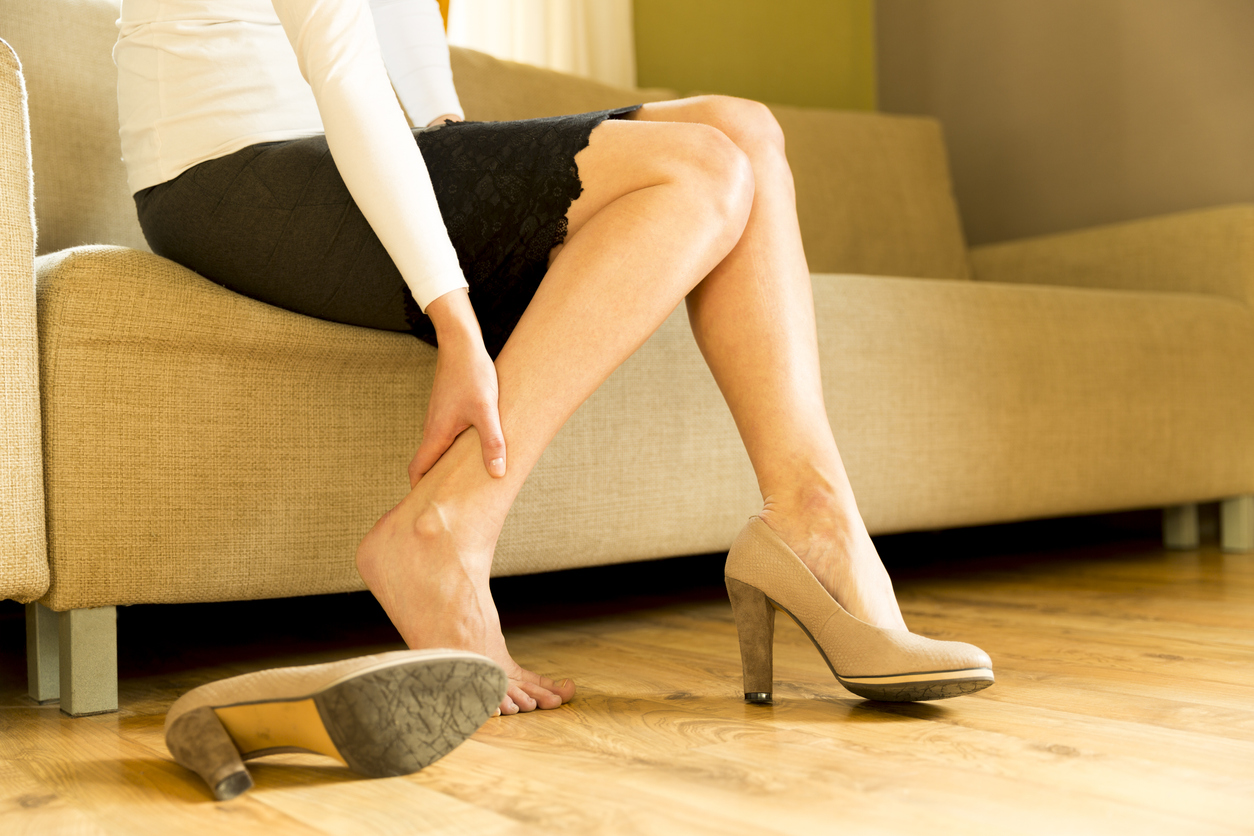
You can’t always see varicose veins, but even invisible varicose veins can cause symptoms.
You’re probably familiar with the classic signs of varicose veins — raised, twisting bundles of blue and purple veins on your legs and feet. And if you notice those signs, you’re likely also familiar with the accompanying symptoms of varicose veins — swelling, pain, itching, and cramping.
Yet varicose veins aren’t always visible, but still may produce symptoms. If your legs feel tired and achy by the end of the day, but you don’t exhibit any of the observable characteristics of varicose veins, you could have “hidden” varicose veins. Here’s why some varicose veins are concealed from the naked eye — and why treating them is just as important as treating those you see.
Table of Contents
ToggleWhy You May Have Varicose Veins You Can’t See
Varicose veins form when the valves in your leg or pelvis veins aren’t working properly. Instead of driving blood back to the heart, these weakened valves allow blood to pool within the vein. Stressed from this reflux of blood, the vein widens and eventually pushes out from under the surface of the skin. When that happens, you have a visible varicose vein.
Within your leg is a vast network of veins. Some lie near the surface of the skin. When superficial veins become blocked and develop into varicose veins, it’s much easier to see them. Meanwhile, other veins remain tucked deep within the leg, covered by a layer of fatty tissue.
You may not see these hidden varicose veins, but you can certainly feel the symptoms. Swelling, pain, and heaviness may be present without any outward evidence of varicose veins. What’s more, you may have invisible varicose veins masked by visible varicose veins.
Any unusual leg symptoms should be reported to your doctor, especially if the changes involve bleeding, a sore that won’t heal, or skin that feels warm or tender to the touch. It’s especially important to have the latter symptom checked because it could be an indication a blood clot has formed in the leg. A blood clot requires immediate medical attention to prevent it from breaking away and lodging in the lungs, where it could result in a dangerous pulmonary embolism.
Finding Hidden Varicose Veins
The first step in uncovering hidden veins is a physical examination by a vein specialist and an ultrasound. By detecting visible and invisible varicose veins, an ultrasound provides a detailed map of each vein that requires treatment. It can also identify the presence of a blood clot. This painless test takes about 30 minutes and is a useful tool in evaluating blood flow in the veins.
With that information, a vein specialist can treat varicose veins close to the surface of the skin and those far below it. Guided by an ultrasound, the specialist either injects the varicose vein with a substance to irritate and close it (sclerotherapy) or uses pulses of energy from a laser or radiofrequency waves to collapse the vein. A newer technique, VenaSeal, seals the blocked vein shut with a proprietary adhesive.
Once the varicose vein is treated, blood flows to healthy veins and the visible varicose veins gradually disappear. Likewise, the veins you can’t see stop causing you symptoms after treatment. Today’s varicose vein procedures are much less invasive than in the past and require minimal anesthesia, making the recovery period extremely quick.
We Treat Both Visible and Invisible Varicose Veins
At the Vein and Vascular Institute, we specialize in diagnosing and treating vascular disorders like varicose veins. We’ll discuss all your treatment options as well as at-home therapies and lifestyle tips to reduce the discomfort of varicose veins. Contact us today for a consultation so you can be free of leg pain.
